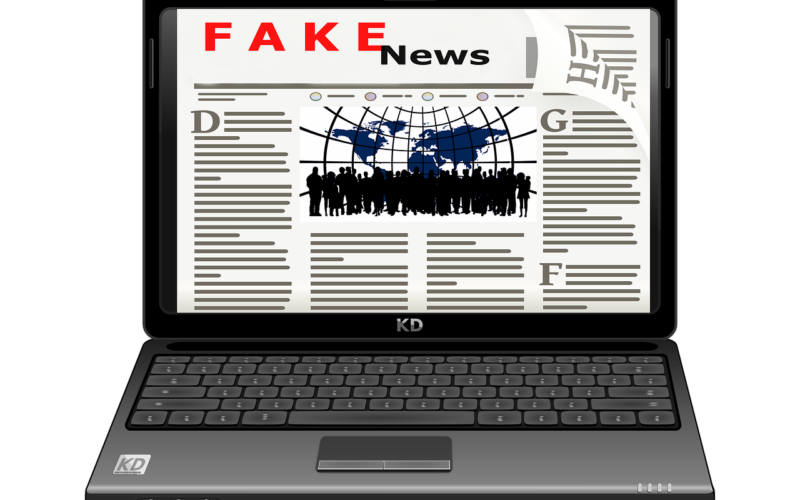Believe it or Not! Information Literacy & Adult Learners

by John Trerotola
“Don’t believe everything you read.”
This reminder is truer today than ever! One of the outcomes of social studies and civics instruction is a more informed citizenry. However, this goal is becoming a major challenge with the prevalence of fake news, deliberate misinformation, and the 24/7 flow of data from both print and digital media sources. With this in mind, Adult Basic Education can take the lead by promoting instructional strategies to make ABE students, at all levels, more critical readers, listeners, and thinkers in this age of mass information.
Luckily, there are a variety of adaptable information literacy curriculum materials that will inform students on how to confidently evaluate print and digital resources from a variety of sources. In the end, being able to evaluate and distinguish between misinformation, opinion, and fact are skills that not only affect adult students, but also have an impact on their families and communities.
The prevalence of fake news is not new but incorporating information/media literacy into curriculum planning is a critically important current trend. While this type of literacy may be a bit unfamiliar, think of it as the ability to access, analyze, evaluate, and act using all forms of communication. It is a necessary skill for academic and workplace success and is essential for informed participation in society. If students cannot evaluate the quality of a source, how can they make good decisions on those matters that affect their everyday lives? A very relatable example for us all is the ability to differentiate between the daily information and misinformation related to COVID-19. In fact, the National Association for Media Literacy Education has a classroom-ready resource on this very topic.
Unfortunately, there are barriers to evaluating the data that is being generated at a rapid pace, ranging from deliberate misinformation to “facts” that cannot be substantiated. How information is currently consumed can add to the challenge of adequate evaluation. Gone are the days of news from three networks as we now live in an age where social media is a major vehicle for information sharing and consumption.
As already noted, Adult Basic Education (ABE) practitioners can draw from a repository of standards’ aligned information/media literacy resources and, based on the current reality, can be incorporated into digital, hybrid, and/or in-person classrooms of varying sizes. These resources correlate with multiple College and Career Readiness Standards (CCRS) anchors and connect to outcomes from Academic, Career and Employability Skills, Transitions Integration Framework (ACES/TIF) and the Northstar Digital Literacy Standards. Moreover, you don’t have to be a social studies teacher as these resources and strategies can be used by all instructors and adapted to a variety of classrooms ranging from ELL to GED®.
“More than any other time, information and media literacy needs to be a necessary part of any ABE curriculum.”
When planning, consider a scaffolded approach to teaching information literacy. Perhaps start with “big picture” lessons to get students comfortable with the topic. What is information literacy and why is it important? Then, incorporate more detailed lessons that challenge students to begin approaching all types of data with a critical eye. It is also equally important to remind students that misinformation can appear in both written and visual forms. Try using the New York Times’ “What’s Going On in this Picture or Graph” as a quick and easy way for students to evaluate visual information.
Fortunately, there are many other classroom-ready resources that are mostly free and can be used in print or digital form. For example, to introduce the topic of information/media literacy, have students read an article from the Strategic Education Research Partnership (SERP) Institute on “Today’s News: Information or Entertainment,” or use a leveled article from NEWSELA where students learn that fake news is not a new phenomenon. It may also be beneficial to engage emerging readers in a Nearpod lesson about the difference between pretend and real, or you can incorporate listening and multiple grammar skills into your instruction by using a “Deepfake” article from Breaking News English. Although you need a nominal paid subscription, ESL Library offers comprehensive lessons on fake news, fact vs. opinion, and other related topics.
For more in-depth lessons, consider flipping your classroom by sending students a video clip on “Identifying Fake News Sources” from C-SPAN Classroom and then use in-person class time to discuss. In addition, iCivics has excellent stand-alone media literacy lessons and even offers an engaging game where students have to “fight” viral deception and false reporting. However, when considering instructional resources related to information literacy, look no further than Stanford University’s Civic Online Curriculum. This free resource has timely leveled lessons and assessments on critically evaluating evidence and sources.
These are just a few of the resources available and while the general website links have been noted, once you are in the sites, additional materials and activities can be acquired by simply using search terms such as “fake news,” “information literacy,” and “media literacy.” Recently, I gave a virtual presentation on the topic of incorporating information literacy curriculum into the ABE classroom and invite you to view the replay.
More than at any other time, information and media literacy needs to be a necessary part of any ABE curriculum. Whether you are teaching remotely or in-person, English Language Learners or students needing a high school equivalency credential, those in the ABE community are in a perfect position to guide students along the information highway while giving them the awareness and skills to critically approach the constant flow of data coming their way. The well-being of our society depends on it!
 John Trerotola is a social studies/ELA teacher in the Robbinsdale (Minnesota) Adult Academic Program. He teaches GED®, Adult Diploma, and college preparatory students. He also has had work experiences in the advanced ELL classroom. In addition to teaching, John participates in Minnesota Department of Education sponsored ABE working groups and has presented/co-presented on various topics regarding social studies curriculum/lesson planning, CCRS development and integration for the ELA classroom, and implementation of the Minnesota Standard Adult Diploma. John holds a Minnesota Secondary Social Studies Teaching License and has a B.A. and M.A. in history. Thanks to his love of history, John is currently splitting his time between Minnesota and Virginia. He is eager to engage with Virginia’s adult educators and can be contacted at [email protected] or # (612) 280-9789.
John Trerotola is a social studies/ELA teacher in the Robbinsdale (Minnesota) Adult Academic Program. He teaches GED®, Adult Diploma, and college preparatory students. He also has had work experiences in the advanced ELL classroom. In addition to teaching, John participates in Minnesota Department of Education sponsored ABE working groups and has presented/co-presented on various topics regarding social studies curriculum/lesson planning, CCRS development and integration for the ELA classroom, and implementation of the Minnesota Standard Adult Diploma. John holds a Minnesota Secondary Social Studies Teaching License and has a B.A. and M.A. in history. Thanks to his love of history, John is currently splitting his time between Minnesota and Virginia. He is eager to engage with Virginia’s adult educators and can be contacted at [email protected] or # (612) 280-9789.